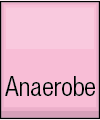
PENICILLINS
Penicillin G (IV, IM)
Penicillin VK (PO)

AMINOPENICILLINS
Ampicillin (IV)
Amoxicillin (PO)
No Klebsiella activity

ANTISTAPH PENICILLINS
Oxacillin (IV)
Nafcillin (IV)
Dicloxacillin (PO)
HEPATIC ELIMINATION
Coag(-) staph. is generally resistant (>80%)

AUGMENTIN/UNASYN
Augmentin (Amoxicillin/Clavulanate) (PO)
Unasyn (Ampicillin/Sulbactam) (PO)
Unasyn only covers acinetobacter (SPACE)
Rising e. coli resistance
Only treats H/N anaerobes

ZOSYN
Zosyn (Piperacillin/Tazobactam) (IV)
Poor activity versus coag(-) staph.
Can treat lower anaerobes

1G CEPHALOSPORINS
Cefazolin (IV) "Ancef"
Cephalexin (PO)
Cefazolin can be used in penicillin allergy
Cefazolin has some G(+) coverage for prophylaxis

2G CEPHALOSPORINS
Cefuroxime (PO,IV)
Cefotetan (IV)
Cefoxitin (IV)
Cefuroxime gains h. flu, enterobacter, neisseria
Cefotetan and Cefoxitin are cephamycins
Cefotetan and Cefoxitin lack G(+) coverage

3G CEPHALOSPORINS
Ceftriaxone (IV) "Rocephin"
Cefotaxime (IV)
Cefpodoxime (PO)
Cefdinir (PO)
Cefixime (PO)
Ceftazidime (IV) *Antipseudomonal activity
NO RENAL ADJUSTMENT (Ceftriaxone only)
Ceftazidime lacks G(+) cover
Ceftriaxone penetrates CSF
Avoid Ceftriaxone if low AmpC lactamase levels

4G CEPHALOSPORINS
Cefepime (IV)
Avoid use with mid/high AmpC levels
Low cross-react with penicillin allergy

5G CEPHALOSPORINS
Ceftaroline (IV)
Often reserved for refractory MRSA or VRSA

ZERBAXA/AVYCAZ
Zerbaxa (Ceftolozane/Tazobactam) (IV)
Avycaz (Ceftazidime/Avibactam) (IV)
Limited FDA-approved indications
Avycaz can be used for ESBL and CRE (KPC only)
Zerbaxa can be used for ESBL

CARBAPENEMS
Meropenem (IV)
Imipenem/Cilastatin (IV)
Ertapenem (IV)
Doripenem (IV)
Often reserved for ESBL (DOC)
Can treat lower anaerobes
May cause seizures (Imipenem/Cilastatin more than others)
Ertapenem lacks acinetobacter coverage
Cilastatin px imipenem breakdown

MONOBACTAM
Aztreonam (IV)
Often reserved for PCN-allergic patients

AMINOGLYCOSIDES
Amikacin (IV,IM)
Gentamicin (IV,IM)
Tobramycin (IV,IM)
Causes nephrotoxicity
Can use low dose w/ beta-lactam for G(+) synergy

FLUOROQUINOLONES
Levofloxacin (IV,PO)
Ciprofloxacin (IV,PO)
Moxifloxacin (IV,PO)
May cause QT-prolongation (M>C>L)
Moxi. does not concentrate in the urine well
Moxi only treats H/N anaerobes
Separate dosing from polyvalent cations

MACROLIDES
Azithromycin (PO,IV)
Clarithormycin (PO)
BACTERIOSTATIC
Causes QT prolongation
Distributes rapidly/well to tissue, but not blood

TETRACYCLINES
Doxycycline (IV,PO)
Minocycline (IV,PO)
BACTERIOSTATIC
Take with water to px esophagitis
Separate dosing from polyvalent cations

VANCOMYCIN
Vancomycin (IV,PO)
Dalbavancin, Oritavancin, Televancin (IV)
High Trough Goal: Endocarditis, OM/PJI, ICU HCAP/sepsis and MRSA (MIC=1)
Very High Trough Goal: Meningitis/CNS Infections
Causes nephrotoxicity (Potential increased incidence with long term coadmin with PTZ)
PO formulation for c. diff only (DOC)
Prevent Red Man Synd. by slowing infusion (by 50%)
Vancins cover G(+) anaerobes
Oritavancin covers VRE

OXAZOLIDINONES
Linezolid (IV,PO)
Tedizolid (IV,PO) -reserved for resistance
BACTERIOSTATIC (except strep. sp)
Causes myelosuppression with prolonged use (>2w)
May cause serotonin syndrome

DAPTOMYCIN
Daptomycin (IV)
No activity in the lung (inactivated)

CLINDAMYCIN
Clindamycin (IV,PO)
BACTERIOSTATIC
CA: Covers community acquired-MRSA
Only treats H/N anaerobes

TIBECYCLINE
Tigecycline (IV)
HEPATIC METABOLISM
BACTERIOSTATIC (Except strep. pneumo and listeria)
Used primarily for G(-) coverage
Lacks Proteus, Providencia, and Pseudomonas coverage
Can treat Acinetobacter if MIC less than 4
Potentially effective for nosocomial MRSA
Does not concentrate well in blood or urine
Concentrates well in lung and abdomen
Covers ESBL and CRE if desperate
BBW: Increase in all-cause mortality





